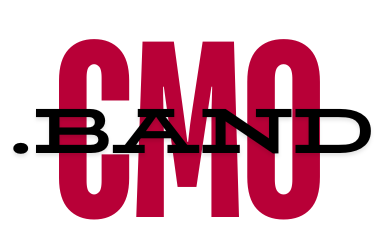- Mastering Competitor Analysis on Behance: Strategies for Creative Success
- Understanding the Landscape
- Analyzing Visual Trends
- Engagement Metrics
- Narrative and Storytelling
- Collaboration and Networking
- Leveraging Insights for Strategic Planning
- Continuous Learning and Adaptation
- Tools and Resources
- Educate and Inspire
Mastering Competitor Analysis on Behance: Strategies for Creative Success
In the dynamic world of digital marketing and design, staying ahead of the competition is not just beneficial; it’s essential. Behance, as one of the premier platforms for showcasing creative work, is a fertile ground for not only displaying your own talents but also for conducting thorough competitor analysis. This analysis can provide invaluable insights into current trends, emerging styles, and effective presentation techniques. Here’s how you can leverage competitor analysis on Behance to elevate your creative success.
Understanding the Landscape
Before diving into the specifics, it’s crucial to grasp the broader landscape of your industry on Behance. Start by identifying key players, both direct competitors and influential creatives, within your niche. Look at the types of projects they post, the consistency of their uploads, and the engagement (likes, comments, and shares) they receive. This will give you a benchmark against which you can measure your own performance.
Analyzing Visual Trends
Behance is a visually-driven platform, making it an excellent resource for spotting design trends. Pay attention to recurring themes, color schemes, typography, and layout styles among top-performing posts in your category. Are there noticeable patterns that make these projects stand out? Perhaps minimalism is making a comeback, or maybe there’s a shift towards more vibrant, eclectic designs. Understanding these trends will not only inspire your own projects but also help you tailor your work to appeal to current audience preferences.
Engagement Metrics
The engagement a project receives on Behance can tell you a lot about what resonates with the audience. Analyze the kind of feedback, comments, and questions these projects are getting. Are viewers praising a particular aspect of the design, or are they offering constructive criticism? This feedback can serve as a direct line to the viewer’s thoughts, providing you with clear direction on what works and what doesn’t.
Narrative and Storytelling
One often overlooked aspect of successful Behance projects is the narrative woven into the project description. Projects that tell a compelling story about the work, the creative process, and the challenges overcome often engage viewers more deeply. Examine how your competitors structure their project stories. Is there a personal touch? How do they connect the project with broader design trends or needs? Emulating this storytelling approach can significantly enhance the impact of your own presentations.
Collaboration and Networking
Behance is not just a platform to showcase work; it’s also a community. Notice how your competitors collaborate with other creatives and brands. Such collaborations can expand your reach and introduce your work to new audiences. Networking with other designers can lead to partnerships that may combine different strengths and unique styles, potentially leading to groundbreaking projects that can capture the community’s attention.
Leveraging Insights for Strategic Planning
With a comprehensive understanding of your competitors’ strengths and weaknesses, you can strategically plan your own uploads. If you notice a gap in a particular area that your competitors are not addressing, you can fill that niche. Additionally, aligning your upload schedule with industry peaks (like design weeks or holidays) when viewer engagement is higher can increase your visibility.
Continuous Learning and Adaptation
The digital landscape is ever-evolving, and so should your approach to competitor analysis on Behance. Regularly revisiting your analysis and updating your strategies based on new data will keep you on the cutting edge. Engage with the community, ask for feedback, and be willing to adapt based on what you learn. This proactive approach not only improves your work but also keeps it relevant and engaging to the Behance community.
Tools and Resources
Utilize tools like Adobe Analytics or similar to track your project’s performance over time. There are also many third-party tools available that can help analyze social engagement and trends more deeply. Combining these tools with your own observations will provide a well-rounded understanding of your competitive landscape.
Educate and Inspire
Finally, remember that Behance is a platform not just for competition but for inspiration. Share your knowledge, insights, and experiences. By contributing to the community, you establish yourself as a thought leader and go-to expert in your field, which in itself can set you apart from the competition.
By mastering competitor analysis on Behance, you equip yourself with the knowledge to not only keep up with the trends but also to innovate beyond them. Remember, the goal is not just to compete but to push the boundaries of creativity and establish a unique and compelling digital presence.

A seasoned digital marketing strategist with over 8 years of experience across various areas of digital marketing, including SEO, SMM, PPC, content marketing, and email marketing. Specializes in transforming B2B, B2C, e-commerce, and SaaS businesses by creating effective go-to-market strategies and building thriving digital ecosystems. Known for a data-driven approach to optimizing campaigns and maximizing results.
“If your business is looking to scale or in need of a fresh perspective, feel free to contact”.





